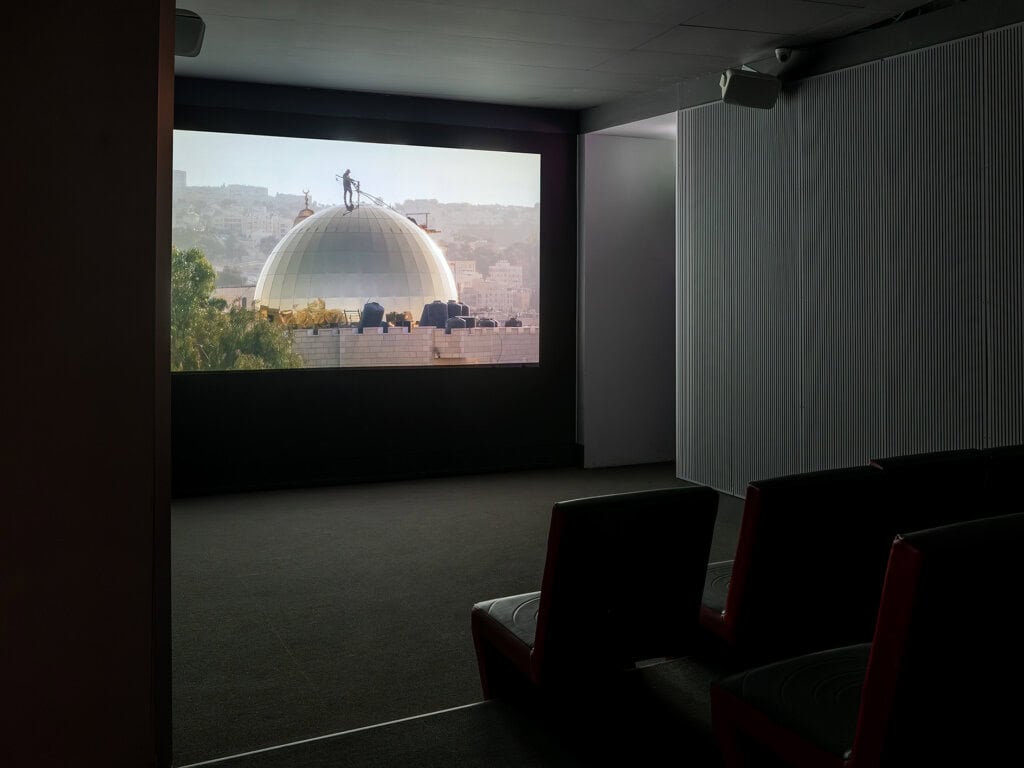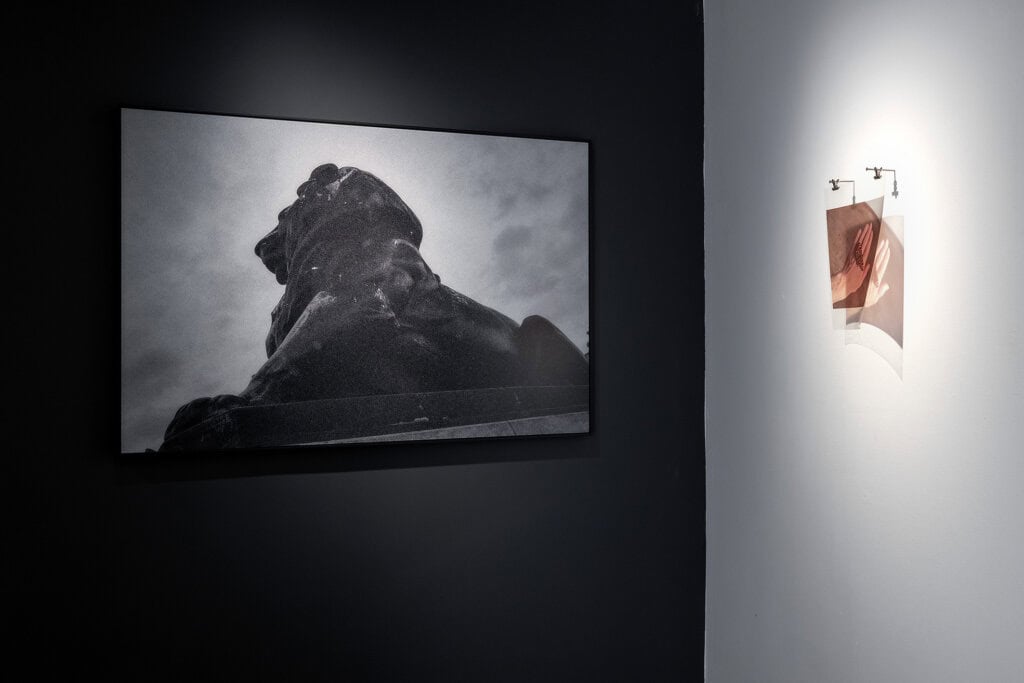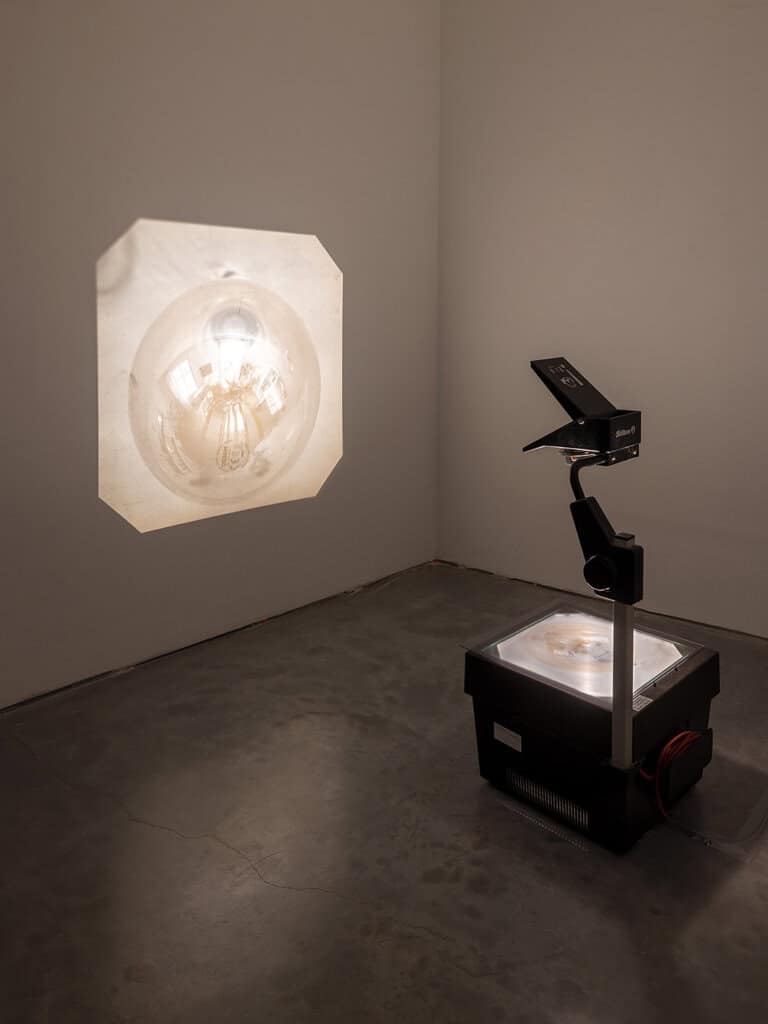Dan Robert Lahiani: Oleh Behoah
Irit Carmon-Popper
24/07/2025 -
22/11/2025

Time is not a line but a dimension, like the dimensions of space. If you can bend space you can bend time also. (Margaret Atwood)
Dan Robert Lahiani choreographs encounters between antithetical manifestations using a unique abstract language that unfolds like a dance. In his spatial video installations and drawings, the mechanical intersects with human movement, a panoramic view transforms into an archival object, the static brushes against the mobile. Along the continuum of sizes between monument and ornament—as sculptor Robert Morris observed—the qualities of publicness or privateness are imposed on things according to their dimensions. On this size scale, the human body establishes itself as a constant.
Human movement is driven by the ground’s thrust, which responds with a counterforce and enables motion—but its essence is not solely physical, but also metaphysical, like an inner awareness that propels recovery, or religious transcendence. In the quest for equilibrium between two poles, movement flows like a steady frequency in the martial arts, where combat is performed with compassion and sincere intent; or in Hasidism, where the body (as matter) becomes a vessel for releasing the sparks trapped within. The same is true for the works showcased by Lahiani in his first museum-scale solo exhibition. His constant pursuit of freedom carries a quiet danger, yet it also harbors a deep sense of equilibrium.
Oléh b’coah—Heb. “potential immigrant”—is a legal term of the Entry into Israel Regulations (Reg.# 6), referring to a temporary residence visa type A/1 for persons eligible for Aliyah (immigration to Israel) under the Law of Return. Lahiani reclaims this term to narrate his own story as the son of a Sephardic Jewish family from Algeria, corresponding with historical landmarks pertaining to identity and resistance: the Crémieux Decree which granted French citizenship to Algerian Jews (1870); the Algerian struggle for liberation from French colonial rule; the family’s departure from the port city of Oran (1962) to Paris, where Lahiani was born in the 14th arrondissement; and a spiritual life in Jerusalem.
The term Oléh b’coah also carries a metaphysical resonance, coupled with a quandary. In classical Aristotelian philosophy, the terms “potentiality” and “actuality” trace a transformative process from matter to form, in which the potential inherent in matter (potentiality) materializes as form (actuality). In the face of physical limitation, a conscious commitment to preserving motion and resistance is proposed as a condition for freedom. The artist cannot act otherwise: movement is perceived in his work as a necessity, a path out of stasis, where repetition helps sustain routine and sanity in states of foreignness and adaptation. Under his poetic gaze, the archival photographic material, too, seems to fall out of time.




